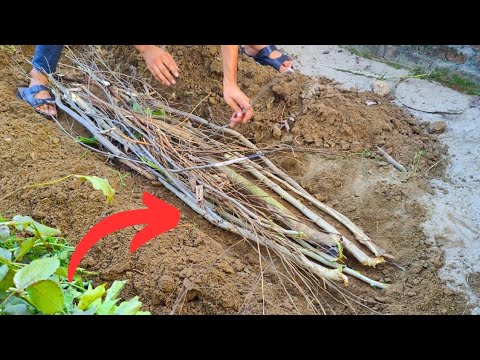Discover the Secrets! What Happens When You Bury Logs in a Raised Bed?
………………………………………..
For More Videos
https://www.youtube.com/@TMBaagh2.O
……………………………………………………….
For More Information Must Visit
……………………………..
How To Make Hugelkultur bed
Best way to build Hugelkultur
Producer;
A hugelkultur bed is a type of raised garden bed built using layers of organic materials, with a base made of wood. The word is German for “mound culture” or “hill culture,” and the bed mimics the natural process of forest decomposition.
The first step is finding a spot that gets at least 6 hours of direct sunlight, as most vegetables and plants need good sun exposure. The sunlight ensures plants grow strong and produce well. After clearing the area of weeds, we remove the top 3 to 4 inches of soil. This clears the space to start building the bed while keeping the topsoil aside, so we can reuse it later to provide the best nutrients for the growing plants.
Next, we place the branches and twigs we’ve gathered from the garden. Although we don’t have large logs, the branches and twigs will still help a lot. As they start to decompose, they will slowly break down, providing nutrients to the plants over time. The decaying wood also holds water like a sponge, helping to keep moisture in the bed, which reduces the need for frequent watering. This means the bed will stay moist even during dry periods, giving plants a steady water supply.
After placing the branches, we add a layer of soil to lock them in place. This soil keeps the branches stable while also creating a layer for plant roots to settle into. The small green branches and plants that are no longer producing, like healthy but non-productive pepper plants, come next. These green materials provide nitrogen, a key nutrient for plant growth. As these fresh materials break down, they will feed the soil, helping young plants get off to a strong start.
We then cover the green branches with another layer of soil. This layer is important because it helps break down the green materials while keeping the bed stable. It also creates space for roots to grow deeper into the bed. The next step is adding leaves. The leaves help retain moisture, preventing it from drying out too fast. The leaves also break down over time, adding organic matter to the soil, which improves its texture and nutrient content.
After covering the leaves with a thick layer of good loamy soil, we are adding a base for the plants to grow in. This soil is rich, allowing roots to spread easily and get the nutrients they need to grow strong. The loamy soil has the perfect balance of sand, silt, and clay, ensuring good drainage while still holding onto enough moisture for the plants.
Once the loamy soil is down, we sprinkle a big cup of bone meal and neem cake powder. The bone meal is full of phosphorus, which is essential for healthy root development and strong plant growth. By adding this, we’re giving the plants a boost, especially when it comes to their roots. Strong roots mean healthier, more productive plants. Neem cake powder, on the other hand, acts as both a natural fertilizer and a pest repellent. It enriches the soil with nutrients while helping to keep harmful insects away, giving plants a healthy growing environment without the need for chemical pesticides.
Finally, we add a thin layer of fully decomposed manure. This layer is rich in nutrients, helping to feed the plants as they grow. Manure adds organic matter to the soil, improving its structure and making it easier for plant roots to take up water and nutrients. Fully decomposed manure is gentle, meaning it won’t burn the plants but will provide a steady supply of food over time. After spreading the manure, we gently tap it down, which helps keep everything in place and makes sure the bed is stable and ready for planting.
After adding everything to the hugelkultur bed, it’s a good idea to wait about 3 to 4 weeks before planting. It allows the materials in the bed to start breaking down. The branches, green materials, and leaves will begin to decompose, releasing nutrients into the soil.
Thank you for watching! If you enjoyed this video and want to see more gardening advice, please like, subscribe, and check out our other videos.
#hugelkultur #raisedbed #garden #growing


3 Comments
I also use this method in raised beds garden
Am saving all my sceaps n leftovers from the kitchen for this purpose (fl winter garden)
so .. what happens?